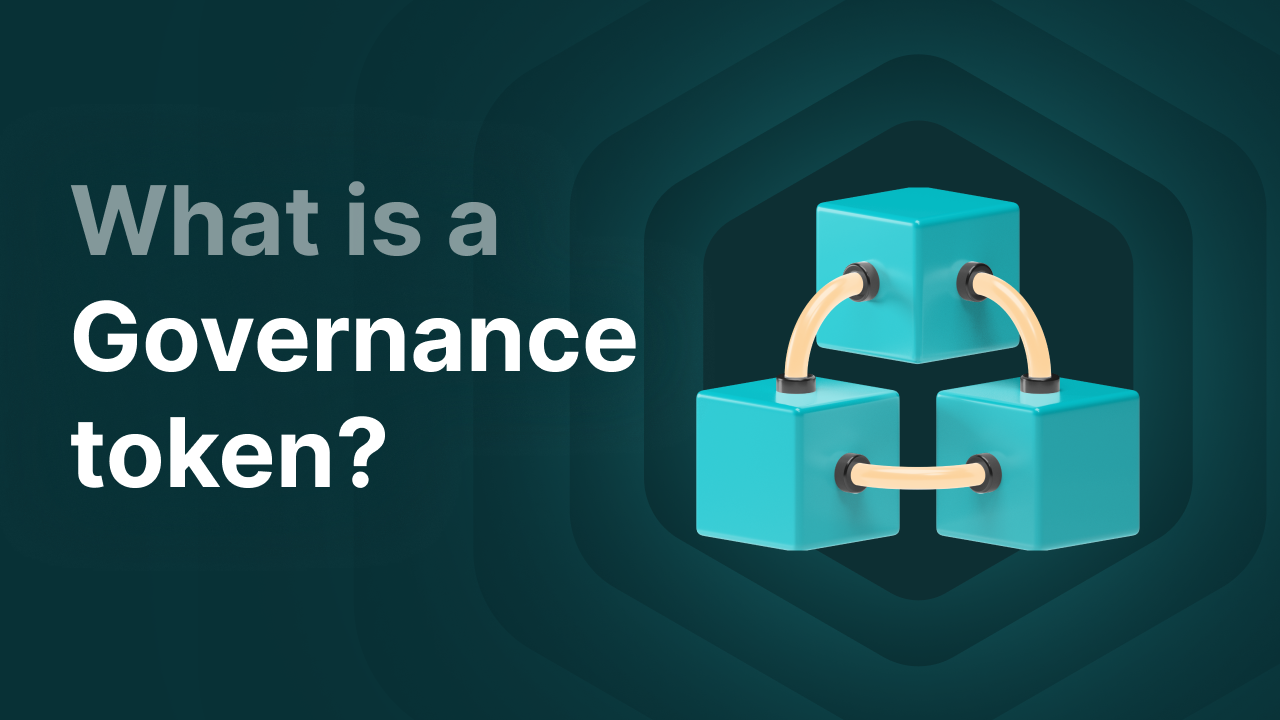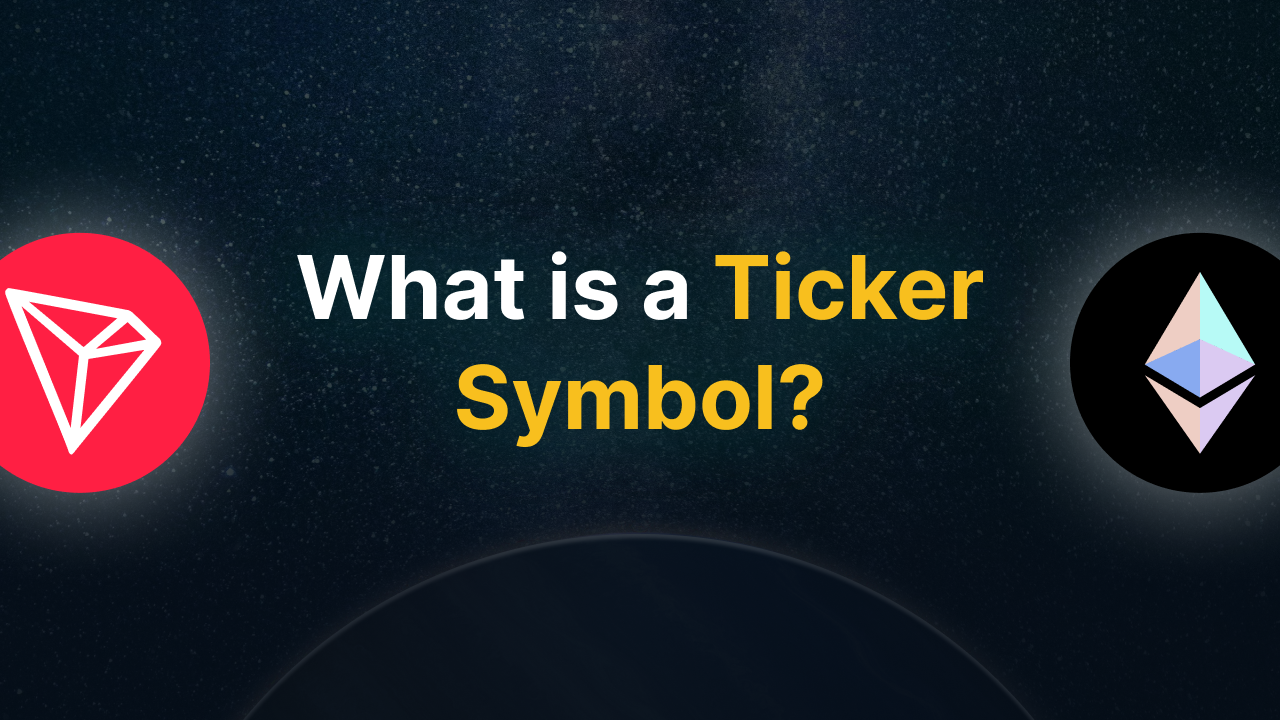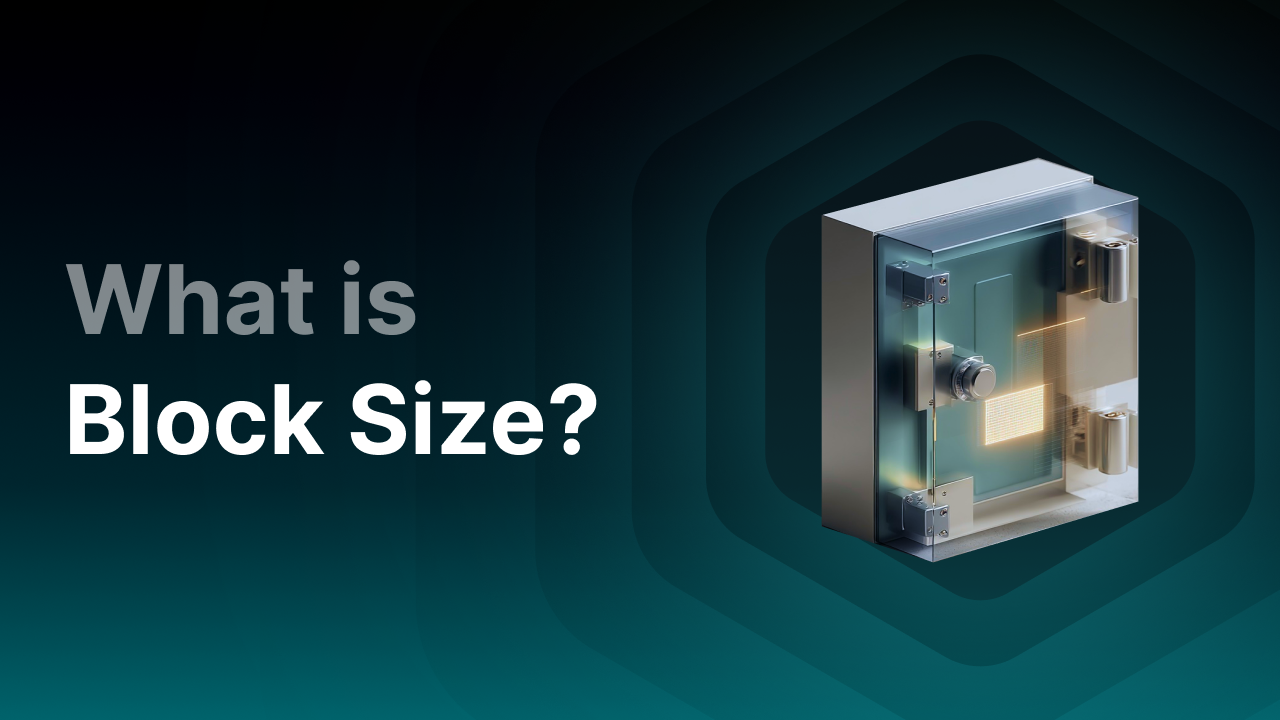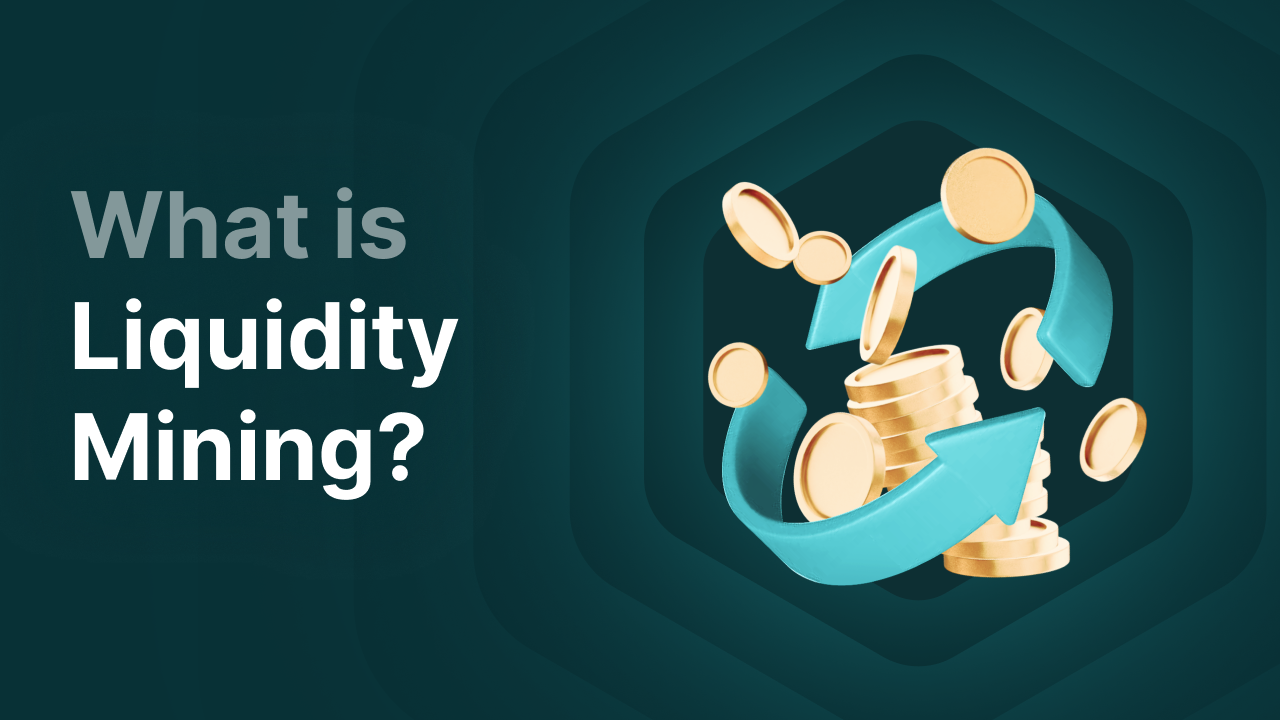What is Yield Farming and How Does It Work?
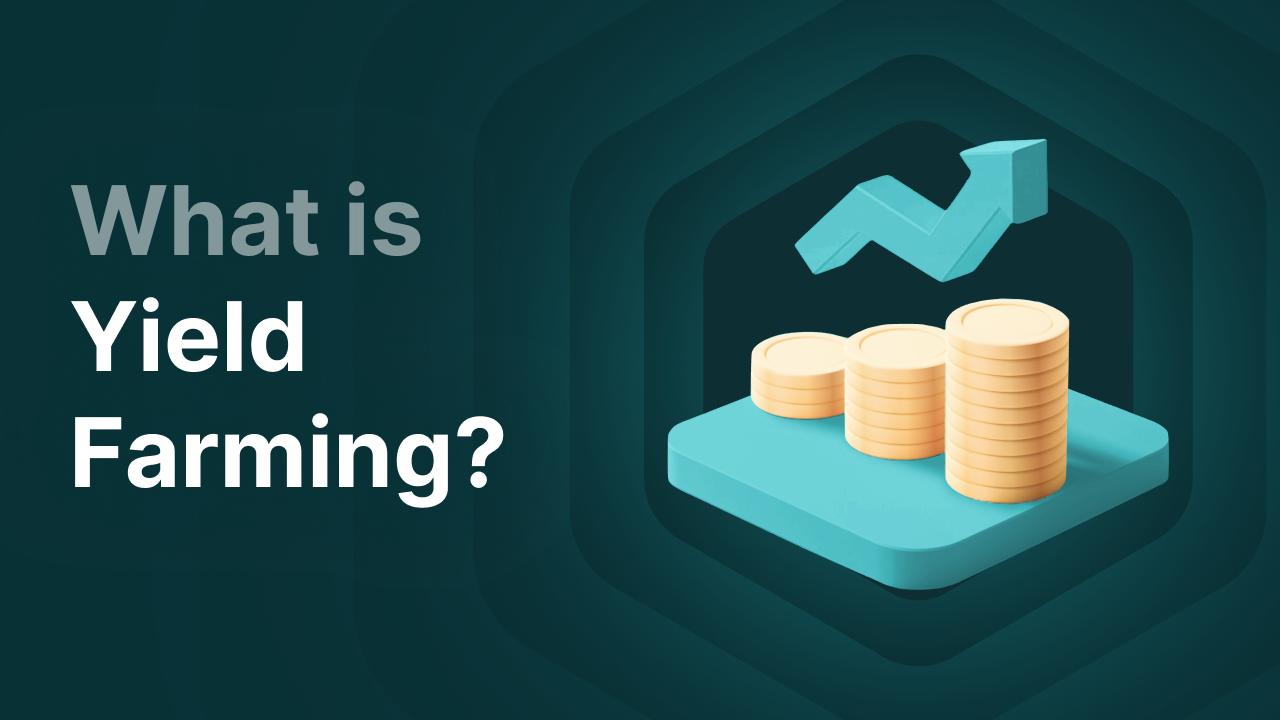
What is Yield Farming?
Yield farming is a way for crypto investors to earn extra income on top of the crypto they already own. They do this by providing liquidity to decentralized finance (DeFi) protocols. As a reward, liquidity providers receive passive income. Yield farming is crucial for DeFi platforms (also known as decentralized exchanges or DEXs), as it ensures users can easily trade tokens offered on the platform. When liquidity is low, tokens are harder to trade and spread costs are high (spread costs). The more liquidity, the more efficiently and cheaply a token can be traded.
This works differently from centralized trading platforms (CEXs). There, the company behind the platform or another third party provides the necessary liquidity.
With yield farming, you lock your coins through a DeFi protocol into a liquidity pool. This is a smart contract that manages all the funds in the pool. You essentially lend it out in exchange for returns. Traders then use the liquidity to trade. Additionally, the platform may lend your tokens to other users through borrowing contracts.
Key Takeaways
-
Yield farming provides passive income by supplying liquidity to Liquidity Pools via DeFi platforms.
-
APY accounts for compound interest, while APR is based solely on the base return without reinvestment.
-
When adding liquidity, you receive LP tokens as proof of your share. You need these to retrieve your original crypto and can also use LP tokens for staking to earn additional income.
-
Yield farming involves risks such as impermanent loss, smart contract vulnerabilities, and rug pulls.
-
Yield farming focuses on liquidity for trading, while staking supports network security. Staking is usually simpler and safer, but often yields lower returns.
How Does Yield Farming Work?
Yield farming works by locking cryptocurrencies in a DeFi protocol, such as Uniswap and Curve. You lock tokens in liquidity pools consisting of trading pairs like UNI/USDC. This provides the DEX with liquidity, enabling more efficient trading via the liquidity pool and potentially lending out tokens via lending protocols. In return, you earn yields paid in the tokens you have locked.
The level of yield farming income depends on the platform and trading pair. One pair may earn you 5% APY (Annual Percentage Yield) and another 10% APY.
APY reflects the expected annual return, accounting for reinvesting your earnings. Because returns are paid out regularly, you can reinvest them right away. APY includes this effect, unlike APR. APY percentages are usually higher than APR. APR (Annual Percentage Rate) reflects yearly return on your initial investment without reinvestment.
Example:
Suppose you invest €1,000 in a yield farming pool. At 5% APR, you receive exactly €50 after a year since the return is based on your initial investment, without reinvesting.
If you reinvest those earnings monthly, your effective return becomes about 5.12% APY, or €51.16. That extra comes from compound interest: earning interest on previously earned interest.
Yields often depend on how much is already locked in the pool. Pools with low liquidity tend to offer higher interest rates, as fewer providers share the rewards. This also brings more risks, since they often involve newer, more volatile cryptocurrencies. Additionally, these smart contracts are less tested, increasing vulnerability to bugs.
Automated Market Makers (AMM) and LP Tokens
DeFi protocols use Automated Market Makers (AMMs) to enable token swaps without traditional order books. Instead of matching buyers and sellers directly, trades occur via the liquidity pool: a smart contract where users supply liquidity.
Users who lock tokens in such pools via yield farming (liquidity mining) receive LP tokens (Liquidity Provider tokens). These tokens prove their share in the pool and entitle them to part of the earnings, such as trading fees paid by users swapping tokens. You can also stake LP tokens on various platforms for additional rewards.
Example:
Suppose you add €1,000 worth of ETH and USDC to a Uniswap pool totaling €100,000. You’ll receive LP tokens representing 1% of the pool.
You redeem these LP tokens when you withdraw your crypto from the pool. From that point on, you no longer generate passive income.
The Yield Farming Process
Want to start yield farming yourself? Follow these steps. Note that all DeFi platforms work differently.
-
Choose your network: Select which network you want to use for yield farming. Popular networks include Ethereum, Solana, Arbitrum, and Optimism.
-
Have crypto on an external wallet: Depending on the network you choose, make sure your crypto is stored in an external wallet. You’ll use this to start yield farming. Many users transfer funds from centralized exchanges (CEXs) like Finst. At Finst, you can send many cryptocurrencies across various networks to external wallets. Check here which cryptocurrencies you can withdraw.
-
Choose a platform: Look for a trustworthy DeFi platform with realistic APYs that supports yield farming. Examples for Ethereum include Uniswap and Aave, and for Solana: Raydium and Orca.
-
Connect your wallet to the DeFi platform: Before you can begin yield farming, connect your wallet to the DeFi platform.
-
Choose a liquidity pool and lock your tokens: Select a liquidity pool like SOL/USDC or ETH/USDC and lock your tokens.
-
Receive LP tokens: After locking your crypto, you’ll receive LP tokens that represent your share in the pool. Optional: stake your LP tokens for extra rewards.
-
Earn rewards and reinvest: Rewards, funded by trading fees from users, are paid periodically. Reinvest to earn compound interest. Some protocols do this automatically or offer the option.
Each platform has different terms, like lock-up periods and pool options. Always research which platform suits you best. Many smaller DeFi protocols are less tested and possibly less reliable. There are malicious actors in the crypto space who may try to trap you with corrupted smart contracts designed to steal your tokens.
Difference Between Yield Farming and Crypto Staking
Yield farming and staking may seem similar to many. Both methods reward users for supporting a platform or blockchain by locking crypto over time. Both allow you to earn passive income.
However, there's a key difference. Yield farmers help DeFi protocols by providing liquidity to liquidity pools, enabling smoother token trading. Stakers help secure blockchains that use the Proof of Stake (PoS) mechanism and support transaction validation and network security.
With yield farming, rewards and pool shares are set in a smart contract. With staking, reward payouts are governed by the blockchain’s protocol.
Each method has its pros and cons. Staking is generally seen as safer and simpler. You often stake crypto directly on the network, and rewards are part of the protocol, reducing the risk of contract bugs or hacks. Staking also requires less technical knowledge. Many centralized platforms let you stake easily—like Finst, where you can stake various cryptocurrencies. Yield farming requires you to find a DeFi protocol and connect your account from an external wallet like MetaMask. You also need to manage LP tokens and sometimes reinvest manually.
On the flip side, yield farming often provides higher returns. DeFi platforms may offer high APYs and sometimes distribute bonus tokens. This gives you more earning potential. Also, DeFi platforms offer a broader range of options. With staking, you’re often limited to native tokens, whereas yield farming offers many liquidity pool combinations.
In terms of flexibility, yield farming allows for quicker switching between pools and platforms. With staking, tokens are often locked for a set period (lock-up or unbonding), which can be inconvenient if you want to move quickly.
Both methods have unique pros and cons. Choose the method that suits you best. Higher rewards often come with higher risks. Always do thorough research.
Advantages of Yield Farming
Yield farming is a good way to earn extra income on your crypto. You also help other users by providing liquidity. Below are the main advantages:
-
High return potential: Yield farming can provide high returns by supplying liquidity to pools. Reinvesting rewards earns you compound interest and additional income. Yields are often higher than traditional staking.
-
Multiple income streams: In addition to trading fee earnings, some DeFi platforms distribute bonus tokens to liquidity providers. These are often governance tokens you can use freely—for staking, yield farming, or voting on protocol changes. You can also stake LP tokens to earn additional income.
-
No fixed lock-up period: Most DeFi protocols don’t enforce lock-up periods for yield farming. You can withdraw your tokens at any time to trade or move them. This gives you a lot of flexibility.
-
Flexible deployment: Thanks to DeFi’s decentralized nature, you can easily switch between liquidity pools, tokens, and protocols. See better yields elsewhere? You can switch quickly.
Disadvantages of Yield Farming
Yield farming also comes with downsides and risks. Here are the main ones:
-
Impermanent loss: Occurs when token values in a liquidity pool change relative to their market price. If one or both tokens rise or fall significantly, the AMM algorithm adjusts the pool ratio. This can leave you with less value than if you'd simply held your crypto.
-
Smart contract risks: DeFi platforms use smart contracts, including in yield farming. These can contain bugs or vulnerabilities that hackers exploit to steal funds. Some developers also launch scam projects offering unrealistically high APYs, then perform a rug pull by withdrawing all liquidity. This can lead to permanent loss.
-
Complexity: Yield farming is generally complex, especially for beginners. It requires technical knowledge. Staking is often a simpler alternative, particularly via centralized platforms.
Final Thoughts
Yield farming is an innovative way to earn extra returns on your crypto by providing liquidity to DeFi platforms. While it often yields higher returns than traditional staking, it also involves more complexity and risk. It’s essential to understand how liquidity pools work, what LP tokens are, and the risks involved. By consciously choosing between staking and yield farming based on your risk profile, experience, and goals, you can make the most of what DeFi offers. Always conduct thorough research before getting started.
